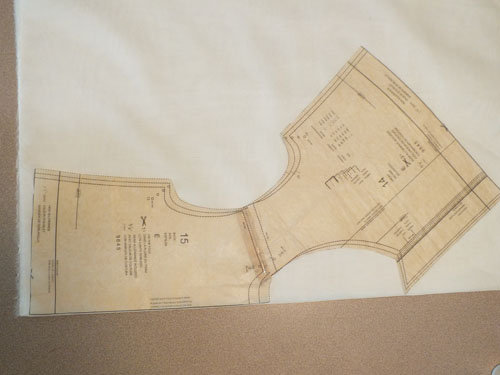 |
| May Book Blog: Serge With Confidence by Nancy Zieman |
I asked you last week to gather your materials, but two things I failed to mention were KK2000 Temporary Spray Adhesive and Roxanne’s Glue Baste-It. Since we’re working with two fabrics, the spray is handy for adhering the layers together, particularly since organza against batiste is a very slippery proposition. I personally like to lightly spray the surface of the batiste and layer the organza on top before cutting out the pieces, so they will be cut out the exact same size.
Roxanne’s glue is an option to baste stitching hems in place prior to stitching. Also, pre-wash both your fabrics before starting. And I’m thinking when we get to the cover stitching next week, I may try it with some wash-away stabilizer first since organza might need the extra support; so have that on hand.
Another tip I should have mentioned last week before getting started is to check the availability of wooly nylon threads before you decide on your batiste color. My initial thought was to use blue, but Gutermann’s Bulky Nylon, which is available to me locally, didn’t have a shade of blue that would work. So instead, I’m using cream batiste, white organza and pink thread for the cover stitching.
Preparation:
1. Before we can start with the decorative part of serging our project we have to cut out the jacket pattern, which if you’re using Burda 9645 are pieces 14, 15 and 16. I altered the pattern in two ways. First, I preferred a straight sleeve rather than the slight bell design given in the pattern, so before cutting out, I folded the sleeve pattern straight down from the underarm on both sides.
2. Second, since I didn’t want the cover stitch to be altered in appearance over the shoulder seams, I overlapped the front jacket piece and the back piece on the 5/8-inch seamline, pinned it together and cut it out as one on the fold.
I used the adhesive spray and cut both my batiste and organza layers out together, but you may prefer to cut them separately. Set all the batiste pieces aside for now.
3. The cover stitching will be done on the organza jacket layer. The trickiest part here is making sure the cover stitch will be at the same level across the bottom of both the front jacket and back jacket, so when you join the jacket at the side seams, the shadow stitching lines will match up. Measure up from the bottom of the organza jacket piece 2-1/2 inches. Take a heat or water-soluble marking pen and mark all the way across the bottom on both front and back.
4. Mark 1-1/4 inches in from the neckline all the way around the jacket opening, measuring in from the facing fold when you get to that point. Since you’re working with sheer organza, it is best to place it on top of a dark surface in order to see the edge of the fabric.
Bonnet Preparation:
For the simple bonnet, you’ll need to create a single pattern piece that looks basically like a big gumdrop.
1. Trace off a rectangle 6 inches deep by 15-1/2 inches wide. Draw a line down the center of the rectangle. Measure up 7 inches from the center and make a point. Starting at the right corner of the rectangle, draw a curve up to the center dot. Repeat for the other side.
2. Cut out an organza and a batiste bonnet piece; set the batiste piece aside.
3. To mark the organza bonnet for cover stitch, measure up from the straight lower edge 1-1/2 inches and draw a guideline across. Measure in 1 inch around the curved edge and draw a guideline completely around.
Next week we will tackle our cover stitching on our organza overlay pieces.
-Amelia






No comments:
Post a Comment